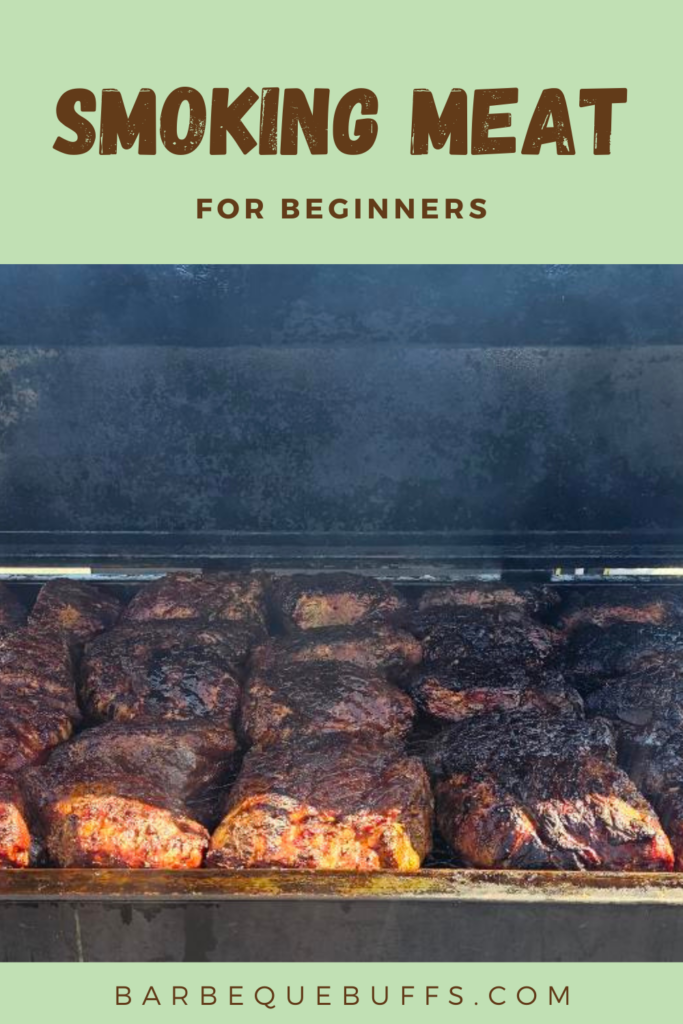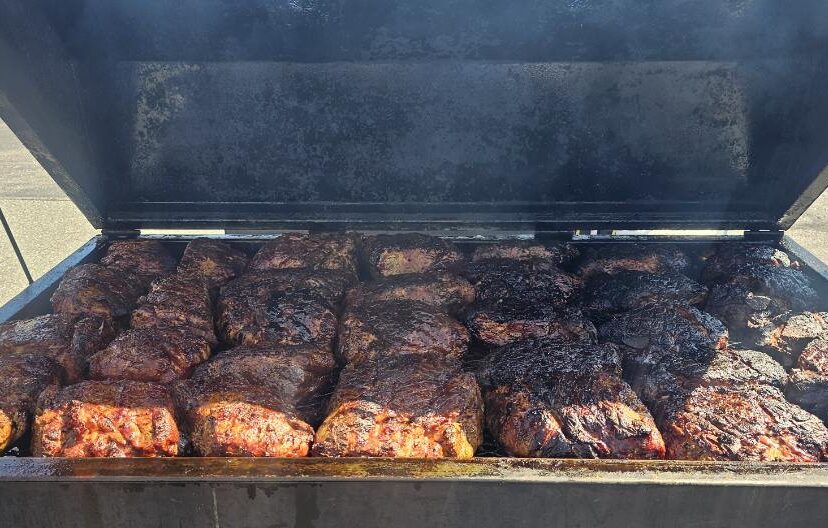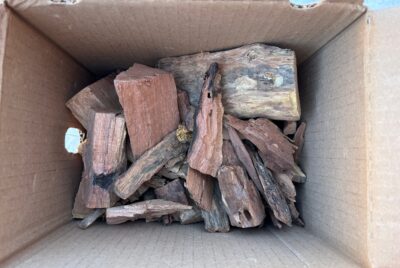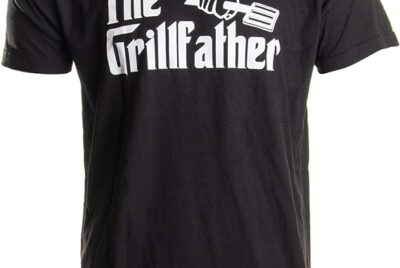Smoking Meat for Beginners
Smoking meat is a time-honored culinary tradition that dates back centuries. It’s not just a cooking method; it’s an art form that elevates the flavor and texture of meat to new heights. As a beginner in the world of smoking meat, you may feel overwhelmed by the number of options and techniques available. Fear not! With the right guidance and a willingness to experiment, you’ll soon be producing mouthwatering smoked delicacies that will impress your friends and family. This info about smoking meat for beginners will get you where you want to go!
So, let’s get into this… and at the end, we’ll answer a bunch of questions!
Benefits of Smoking Meat– Why Do We Do This Here?
One of the primary reasons people turn to smoking meat is for the unparalleled flavor it imparts. The slow, low-temperature cooking process allows the meat to absorb the aromatic smoke from wood chips or pellets, resulting in a rich, complex flavor profile that simply can’t be replicated by other cooking methods. Additionally, smoking meat has the added benefit of tenderizing even the toughest cuts, making it an excellent choice for less expensive cuts of meat. This is EXACTLY why smoking was invented in the first place. Back in the day, cowboys… well, I don’t know if it was cowboys, but people in Texas couldn’t figure out what to do with the beef brisket. It was like trying to eat a cowboy boot- THAT’S HOW I KNEW IT WAS COWBOYS!! But smoking low and slow solved the toughness problem and put a lot of flavor into the cut. Furthermore, smoking meat acts as a natural preservative, extending the shelf life of the meat and reducing the risk of spoilage.
Types of Smokers
When it comes to smoking meat, there are several types of smokers to choose from, each with its own unique advantages.
- Charcoal smokers are popular for their simplicity and affordability, while
- Electric smokers offer precise temperature control and ease of use.
- Pellet smokers combine the convenience of electric smokers with the flavor of wood-fired cooking, making them a favorite among beginners.
- Propane smokers are another option, known for their portability and quick heating capabilities- but I would argue that with a propane smoker, you still have to add some water and wood chips.
Choosing the Right Meat
As a beginner, it’s essential to start with cuts of meat that are forgiving and easy to smoke. Opt for cuts like pork shoulder, ribs, or chicken thighs, which are more forgiving of temperature fluctuations and lengthy cooking times. Additionally, consider the type of meat you’re smoking and how it will pair with the flavors of your chosen wood chips or pellets.
Preparing the Meat
Before you fire up the smoker, take the time to prepare your meat properly. Trim any excess fat from the surface of the meat, as too much fat can lead to flare-ups and uneven cooking. But, as I have said before, don’t get carried away. You want SOME fat on the cut to tenderize the meat. Also, consider applying a dry rub or marinade to add flavor and enhance the texture of the meat.
Setting Up the Smoker
Properly setting up your smoker is crucial to achieving the perfect smoke. Start by preheating the smoker to the desired temperature, then add your wood chips or pellets to the designated tray or chamber. It’s essential to monitor the temperature closely and adjust the vents as needed to maintain a steady flow of smoke. And if you want to do it right, you have to have a meat thermometer as well.
Smoking Techniques
There are two primary smoking techniques to choose from:
- The low and slow method and the hot and fast method. The low and slow method involves cooking the meat at a low temperature (usually around 225°F) for an extended period, resulting in tender, flavorful meat with a deep smoky flavor.
- The hot and fast method, on the other hand, involves cooking the meat at a higher temperature (typically around 275°F) for a shorter period, resulting in a crispier exterior and juicier interior. I, on the other hand, tend to fall somewhere in the middle… about 235° to 250° is kind of the sweet spot. Usually, I monitor the meat temperature more closely than the cooking chamber.
Monitoring the Smoking Process
So, throughout the smoking process, it’s essential to monitor the temperature of both the smoker- or at least the meat itself. Invest in a good quality meat thermometer to ensure that your meat reaches the proper internal temperature for safe consumption. Additionally, be prepared to adjust the temperature and smoke levels as needed to maintain optimal cooking conditions. You will want to be ready to add fuel or restrict oxygen to your fire to reach the desired heat level… it’s kind of an art.
Avoiding Common Mistakes
While smoking meat is relatively straightforward, there are a few common mistakes that beginners often make. Avoid over-smoking your meat, as too much smoke can impart a bitter, acrid flavor. Similarly, be sure to cook your meat thoroughly to avoid the risk of foodborne illness. Finally, don’t forget to let your meat rest for a few minutes before slicing to allow the juices to redistribute evenly.
Safety Precautions
When handling raw meat, it’s essential to practice good food safety habits to:
- prevent cross-contamination and foodborne illness.
- wash your hands thoroughly after handling raw meat
- be sure to clean your smoker regularly to prevent the buildup of harmful bacteria
Tips for Flavorful Results
To take your smoked meat to the next level, consider experimenting with different wood flavors to find the perfect combination for your taste preferences. Additionally, adding moisture to the smoker with water pans or occasional spritzing can help keep your meat juicy and flavorful throughout the smoking process. But let me be super clear… this spritzing should be OCCASIONAL. The biggest problem that I see with the process is OPENING the cook chamber. You don’t want to let all the heat out!!
Troubleshooting
Even the most experienced smokers encounter issues from time to time. If you find that your smoker is struggling to maintain a consistent temperature or that your meat is cooking unevenly, don’t panic. Experiment with adjusting the vents or adding more fuel to the fire until you find the right balance. Take it easy, it usually takes a few minutes for the fire to respond to changes that you make. Also, if it’s cold outside, that can cause problems. Consider insulating your smoker with some towels or one of these.
Knowing When the Meat is Done
Determining when your meat is done can be a bit tricky, especially for beginners. As a general rule of thumb, poultry should reach an internal temperature of 165°F, while I like for pork butts, beef and other red meats should reach about 205 degrees- or to your desired level of doneness- if you’re not an aristocrat.
Resting and Serving
Once your meat has reached the proper internal temperature, it’s essential to let it rest for a few minutes before slicing. This allows the juices to redistribute throughout the meat, resulting in a juicier, more flavorful end product. When it comes time to serve your smoked meat, don’t be afraid to get creative with your presentation to impress your guests.
Smoking meat is a rewarding and enjoyable hobby that anyone can master with a bit of practice and patience. By following the tips and techniques outlined in this guide, you’ll be well on your way to creating mouthwatering smoked delicacies that will have your friends and family begging for more.
FAQs
- How long does it take to smoke meat?
- The cooking time will vary depending on the type and size of the meat, as well as the smoking temperature. As a general rule of thumb, plan for approximately 1 to 1.5 hours of smoking time per pound of meat. Last weekend I did a pork butt that was about 8.5lbs… took me about 9 hours to get it right.
- Can I use any type of wood for smoking?
- While you can technically use any type of wood for smoking, some woods are better suited to certain types of meat than others. Experiment with different wood flavors to find the perfect match for your taste preferences.
- Do I need to soak wood chips before using them?
- Soaking wood chips before using them in your smoker is a matter of personal preference. Some people believe that soaking the chips helps them to smolder and produce more smoke, while others find that dry chips work just fine.
- Can I smoke meat in my backyard?
- Yes, you can absolutely smoke meat in your backyard! Just be sure to check with your local ordinances to ensure that there are no restrictions on outdoor cooking in your area. And make sure to follow all the safety protocols.
- How do I clean my smoker?
- Cleaning your smoker is essential for maintaining optimal cooking conditions and preventing the buildup of harmful bacteria. Start by removing any leftover ash and grease from the smoker, then scrub the interior surfaces with warm, soapy water. Be sure to rinse thoroughly and allow the smoker to dry completely before using it again.
- What is the difference between smoking and grilling?
- Smoking involves cooking meat slowly over indirect heat, usually at low temperatures, while grilling involves cooking meat quickly over direct heat. Smoking imparts a smoky flavor to the meat, while grilling creates a sear and caramelization on the exterior.
- Do I need to brine meat before smoking it?
- Brining meat before smoking can help keep it moist and flavorful, especially for lean cuts like chicken breasts or pork loin. However, it’s not strictly necessary, and you can still achieve delicious results without brining.
- Can I smoke vegetables and other non-meat items?
- Absolutely! Many fruits, vegetables, and even cheeses can benefit from the flavor-enhancing effects of smoking. Haven’t you ever heard of smoked gouda cheese? Experiment with different types of produce to discover unique and delicious flavor combinations.
- What is the best way to store leftover smoked meat?
- To ensure maximum freshness and flavor, store leftover smoked meat in an airtight container or wrapped tightly in plastic wrap or aluminum foil. It can be refrigerated for up to three to four days or frozen for longer-term storage.
- How do I know if my smoker is properly seasoned?
- Seasoning a smoker involves coating the interior surfaces with oil and heating it to a high temperature to create a protective layer that prevents rust and helps to seal in heat and smoke. Once your smoker is seasoned, it should have a dark, shiny appearance and a slightly smoky smell.





